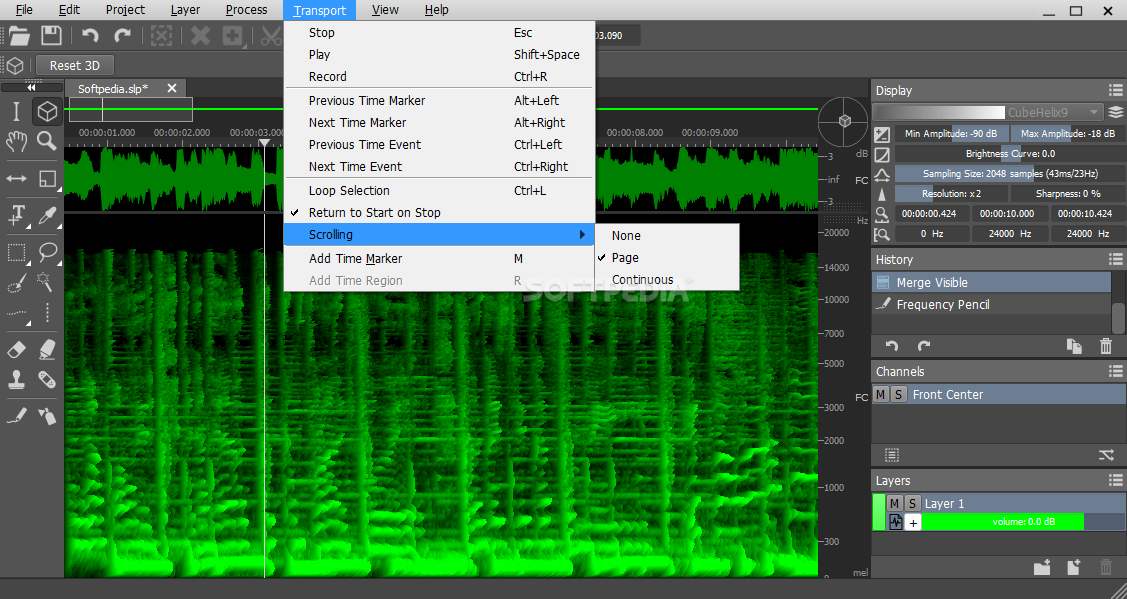

- #Spectralayers pro 7 review how to
- #Spectralayers pro 7 review manual
- #Spectralayers pro 7 review software
#Spectralayers pro 7 review manual
The bad news is that Sony makes it difficult to learn what the software does.Īfter reading the manual from cover to cover, and watching the entire SpectraLayers Pro Seminar Series videos, I’ve compiled a list of “What You Need To Know To Use The Software.” The good news is that what it does, it does really, really well. Further, by allowing us to select specific frequencies, and their related harmonics, it allows us to isolate specific sounds either to make them louder, softer, or remove them altogether. Unlike most audio software, SpectraLayers Pro displays audio as a range of frequencies, rather than waveforms, which display volume.

I installed and reviewed this on a late-model iMac, running OS X 10.8.5. However, SpectraLayers Pro is a stand-alone application that can be used with any audio software. Running on both Mac and Windows, the latest version of SpectraLayers Pro is tightly integrated with Sound Forge Pro 11, also from Sony Creative Software. It is best used as an adjunct to your existing audio editing software. It is an ideal tool for repairing individual audio clips, or creating intriguing sound design elements.
#Spectralayers pro 7 review how to
Sony’s training, while good, needs to focus on how to make users succeed with the software more quickly. Its manual is written for experienced users rather than beginners, the software takes time to learn, and results get better with practice. SpectraLayers Pro does magic, but it isn’t automatic. For example, it allows you to remove a siren from the background of dialog, or a saxophone from a live recording of a trio, or the sound of a jet flying overhead.

In brief, what the software allows you to do is to remove individual sounds from an audio file without affecting the rest of the audio in the file. So, when they asked me to review their software, I jumped at the chance. It would be nie to have different entries for SL 6 and SL 7 (and any other version one may have) to select from in Cubase.I’ve heard of SpectraLayers Pro 2, from Sony Creative Software, for a long time. Is the ARA specification not allowing to distinguish between different versions/tiers of the same software (say, SL 6 Pro vs SL 7, Pro or SL7 One vs SL 7 Pro) or is that a problem on Cubase’s and/or SL’s end? So, if I understand it correctly, whatever version of SL (or even any other software having ARA compatibility) is installed last on a machine is goint to be connected to the ARA interface (for that specific software)? If you don’t want to change the registry keys, you can simply reinstall SL6 (or SL7 if you prefer SL7 to take control) : whatever version is installed last takes control of the ARA plugin. There’s an equivalent key on macOS: in /Library/Preferences/ modify EnginePath If you still want to be able to switch though (although that’ll require a Cubase restart), there’s a registry key on Windows you can change: in HKEY_LOCAL_MACHINE\SOFTWARE\Steinberg\SpectraLayers modify EnginePath Regarding your other question (different SpectraLayers versions being installed on the same computer), unfortunately there’s no easy switch: ARA plugins are so far designed to replace the previous versions (like Melodyne). Just to be clear, “One” is a new SpectraLayers 7 edition that comes with Cubase 11. The initial question was about SpectraLayers 7 only, not different versions (5,6,7).


 0 kommentar(er)
0 kommentar(er)
